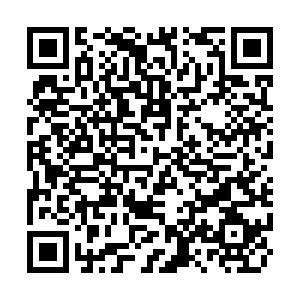Antiwear property measuring method of lubricant based on wear scar detection
Article Text (Baidu Translation)
-
摘要: 为了测定润滑油的抗磨性能, 基于梯度信息提出了一种钢球磨痕直径测定方法。利用钢球磨痕区域具有丰富、同方向磨痕的特点, 采用四方向梯度模板提取磨痕纹理梯度图像。对磨痕纹理梯度图像进行二值化、闭运算、去零星和填补空洞等处理, 自动分割出钢球的磨痕区域。通过计算钢球磨痕区域的面积, 求取磨痕的等效直径, 根据测定的磨痕直径快速测量润滑油的抗磨性能。对磨痕检测结果进行了定性和定量试验, 并对本文方法和显微镜测定方法进行对比。试验结果表明: 利用本文方法提取的磨痕区域完整, 边缘清晰, 显微镜测定方法的平均测量误差为4.015%, 本文方法的平均测量误差为0.073%, 测量精度高。Abstract: In order to measure the antiwear property of lubricant, a measuring method of steel ball wear scare diameter was presented based on gradient information.Because of steel ball wear scar region had rich and same direction wear scars, the texture gradient images of wear scar were extracted by using four direction gradient template.The steel ball wear scare region was automatically separated from the wear scar texture gradient image by the processings of binary, close operation, removing sporadic regions and filling holes.The equivalent diameter of wear scar region was obtained by using the calculated wear scar region area of steel ball.The antiwear properties of lubricant were fast measured through the calculated wear scar diameter.Qualitative and quantitative tests were carried out to the wear scar detection result, and the result was also compared with the traditional microscope measurement result.Analysis result indicates that the wear scar area of extraction method is complete and the edges are clear.The average error of traditional microscope measurement method is 4.015%, the average error of extraction method is 0.073%, so the extraction method has high measurement accuracy.
-
Key words:
- lubricant /
- antiwear property /
- image segmentation /
- wear scar detection /
- diameter measurement /
- gradient /
- four-ball test
-
表 1 不同方法的评估结果
Table 1. Evaluation results of different methods

-
[1] ANTONOV M, HUSSAINOVA I, SERGEJEV F, et al. Assessment of gradient and nanogradient PVD coatings behaviour under erosive, abrasive and impact wear conditions[J]. Wear, 2009, 267 (5/6/7/8): 898-906. [2] DOBRZANSKI L A, POLOK M, PANJAN P, et al. Improvement of wear resistance of hot work steels by PVD coatings deposition[J]. Journal of Materials Processing Technology, 2004, 155-156: 1995-2001. doi: 10.1016/j.jmatprotec.2004.04.405 [3] DOBRZANSKI L A, PAKULA D, KRIZ A, et al. Tribological properties of the PVD and CVD coatings deposited onto the nitride tool ceramics[J]. Journal of Materials Processing Technology, 2006, 175: 179-185. doi: 10.1016/j.jmatprotec.2005.04.032 [4] HATTORI S, ISHIKURA R. Revision of cavitation erosion database and analysis of stainless steel data[J]. Wear, 2010, 268 (1/2): 109-116. [5] RAADNUI S, MEENAK A. Effects of refined palm oil (RPO) fuel on wear of diesel engine components[J]. Wear, 2003, 254 (12): 1281-1288. doi: 10.1016/S0043-1648(03)00104-2 [6] XU Yu-fu, WANG Qiong-jie, HU Xian-guo, et al. Characterization of the lubricity of bio-oil/diesel fuel blends by high frequency reciprocating test rig[J]. Energy, 2010, 35 (1): 283-287. doi: 10.1016/j.energy.2009.09.020 [7] PODGURSKYA V, NISUMAAB R, ADOBERGA E, et al. Comparative study of surface roughness and tribological behavior during running-in period of hard coatings deposited by lateral rotating cathode arc[J]. Wear, 2010, 268 (5/6): 751-755. [8] LI Zhi-wei, HOU Xiao, YU Lai-gui, et al. Preparation of lanthanum trifluoride nanoparticles surface-capped by tributyl phosphate and evaluation of their tribological properties as lubricant additive in liquid paraffin[J]. Applied Surface Science, 2014, 292: 971-977. doi: 10.1016/j.apsusc.2013.12.089 [9] ELOMAA O, OKSANEN J, HAKALA T, et al. A comparison of tribological properties of evenly distributed and agglomerated diamond nanoparticles in lubricated high-load steel-steel contact[J]. Tribology International, 2014, 71: 62-68. doi: 10.1016/j.triboint.2013.11.007 [10] VIDAL F A C, AVILA A F. Tribological investigation of nanographite platelets as additive in anti-wear lubricant: a topdown approach[J]. Journal of Tribology, 2014, 136 (3): 31-39. [11] 孙卫强, 刘佐民. 基于图像处理的磨痕快速测量方法研究[J]. 武汉理工大学学报: 信息与管理工程版, 2007, 29 (5): 1-3, 8. https://www.cnki.com.cn/Article/CJFDTOTAL-WHQC200705000.htmSUN Wei-qiang, LIU Zuo-min. Wear scar measurement method based on image processing[J]. Journal of Wuhan University of Technology: Information and Management Engineering, 2007, 29 (5): 1-3, 8. (in Chinese). https://www.cnki.com.cn/Article/CJFDTOTAL-WHQC200705000.htm [12] 王长生, 袁峰. 摩擦磨损试验磨痕检测新方法的研究[J]. 机械工程师, 2009 (12): 121-123. https://www.cnki.com.cn/Article/CJFDTOTAL-JXGU200912050.htmWANG Chang-sheng, YUAN Feng. New wear scar testing method in friction and wear test[J]. Mechanical Engineer, 2009 (12): 121-123. (in Chinese). https://www.cnki.com.cn/Article/CJFDTOTAL-JXGU200912050.htm [13] 郭太勤, 刘双红, 王昆, 等. 低硫柴油润滑添加剂[J]. 合成润滑材料, 2006, 33 (1): 26-28. https://www.cnki.com.cn/Article/CJFDTOTAL-HCRH200601010.htmGUO Tai-qin, LIU Shuang-hong, WANG Kun, et al. Lubricating additives of low sulfur diesel fuel[J]. Synthetic Lubricants, 2006, 33 (1): 26-28. (in Chinese). https://www.cnki.com.cn/Article/CJFDTOTAL-HCRH200601010.htm [14] 林宝华, 沈本贤, 赵基钢. 超低硫加氢柴油润滑性能的预测模型[J]. 华东理工大学学报: 自然科学版, 2009, 35 (4): 516-520. doi: 10.3969/j.issn.1006-3080.2009.04.004LIN Bao-hua, SHEN Ben-xian, ZHAO Ji-gang. Prediction model for the lubricity of ultra-low sulfur hydrogenation diesel fuel[J]. Journal of East China University of Science and Technology: Natural Science Edition, 2009, 35 (4): 516-520. (in Chinese). doi: 10.3969/j.issn.1006-3080.2009.04.004 [15] BS EN ISO 12156-1∶2000, diesel fuel, assessment of lubricity using the high-frequency reciprocating rig (HFRR), test method[S]. -





 下载:
下载:




